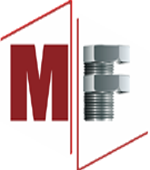Description
Screws:
They have a corkscrew-shaped ridge, known as a thread, wrapped around a cylinder. The head is specially shaped to allow a screwdriver or wrench to grip the screw when driving it in. The most common uses of screws are to hold objects together such as wood and to position objects. Screws are often self-threading (also known as self-tapping) where the thread cuts into the material when the screw is turned. Creating an internal thread that helps pull fastened materials together and prevent pull-out. There are many screws for a variety of materials; those commonly fastened by screws include wood, sheet metal, and plastic.
General:
A screw is a combination of simple machines—it is, in essence, an inclined plane wrapped around a central shaft, but the inclined plane (thread) also comes to a sharp edge around the outside, which acts a wedge as it pushes into the fastened material, and the shaft and helix also form a wedge in the form of the point. Some screw threads are designed to mate with a complementary thread, known as a female thread (internal thread), often in the form of a nut, or object that has the internal thread formed into it. Other screw threads are designed to cut a helical groove in a softer material as the screw is inserted. The most common uses of screws are to hold objects together and to position objects.
There is no universally accepted distinction between a screw and a bolt. A simple distinction that is often true, although not always, is that a bolt passes through a substrate and takes a nut on the other side, whereas a screw takes no nut because it threads directly into the substrate (a screw screws into something, a bolt bolts several things together). So, as a general rule, when buying a packet of “screws”, nuts would not be expected to be included, but bolts are often sold with matching nuts.



Reviews
There are no reviews yet.